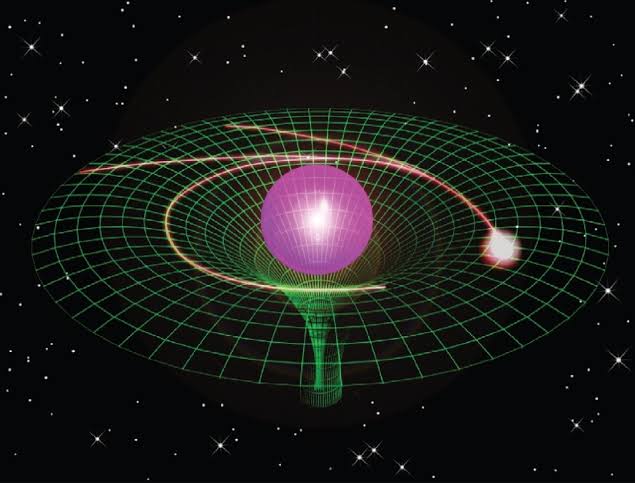Imagine throwing a ball across a park. It soars through the air, arcs gracefully, then lands on the grass and rolls to a stop. It seems like a simple act, but beneath that motion lies one of the most fundamental and fascinating concepts in all of physics: force. Forces are the invisible agents that change the motion of objects, that make things speed up, slow down, or change direction. They are the unseen hands that govern everything from a falling apple to the majestic swirl of galaxies. Without force, the universe would be eerily still — no wind in the trees, no waves crashing on the shore, no movement at all.
But what exactly is a force? How can something so central to the working of the cosmos be so elusive? In this deep dive into one of physics’ most essential ideas, we’ll explore not just what a force is, but why it matters, how it’s measured, and the different forms it takes in the natural world. We’ll unravel the laws of Newton, look into the mysterious quantum forces, and see how everything in existence — including you — is caught in a constant, complex web of pushing and pulling.
The Birth of the Concept: From Aristotle to Newton
To appreciate force, we need to take a brief journey back in time to the minds that first wrestled with the concept of motion. The ancient Greek philosopher Aristotle believed that a force was required to keep an object moving. In his view, motion without force was impossible — if you stopped pushing a cart, it would come to a stop because no force was acting on it. While intuitive, this view was deeply flawed.
It wasn’t until the 17th century that an entirely new understanding emerged, led by Sir Isaac Newton. Newton realized that objects naturally continue in their state of motion unless acted upon by an external force. In his groundbreaking Principia Mathematica, he formalized the laws of motion and laid the foundation for classical mechanics. According to Newton, force is what changes the motion of an object — not what maintains it.
This was a revolutionary shift. Suddenly, force wasn’t just something you applied by touch; it became a measurable, mathematical quantity. Newton’s three laws of motion redefined our understanding of dynamics and introduced the concept of net force — the sum of all forces acting on an object, which determines how it accelerates.
Newton’s Laws: The Trinity of Motion
Let’s revisit Newton’s three laws to understand how force fits into the broader context of motion.
Newton’s First Law, the Law of Inertia, states that an object at rest remains at rest and an object in motion stays in motion at constant velocity unless acted upon by an external force. This tells us that a force is needed to change the current state, not to maintain it.
The Second Law is perhaps the most famous, encapsulated in the equation F = ma. This law tells us that the force acting on an object is equal to its mass times its acceleration. If you push a light object and a heavy object with the same force, the lighter one accelerates more. This simple formula is the cornerstone of mechanics.
The Third Law, often summarized as “for every action, there is an equal and opposite reaction,” reminds us that forces always come in pairs. When you push on a wall, the wall pushes back on you with an equal force. This law explains phenomena from rocket propulsion to why you feel resistance when rowing a boat.
These laws don’t just describe how forces act — they predict outcomes with stunning accuracy. From the orbit of planets to the trajectory of a soccer ball, Newton’s equations remain among the most powerful tools in science.
What Is Force, Really?
At its core, a force is an interaction that changes the motion of an object. It’s not something you can hold in your hand, but it has real, observable effects. When you apply a force to an object, you might cause it to accelerate, deform, or change direction. Forces can be contact-based, like a hand pushing a cart, or action-at-a-distance, like gravity pulling an apple toward Earth.
Force is a vector quantity, which means it has both magnitude (how strong it is) and direction (which way it acts). You can represent it with arrows in diagrams — longer arrows for stronger forces, arrows pointing in different directions depending on the push or pull.
The SI unit of force is the newton (N), named after Sir Isaac Newton. One newton is the force needed to accelerate a one-kilogram mass by one meter per second squared. It’s a small force — lifting an apple takes about one newton — but it quantifies something that permeates every physical interaction in the universe.
Types of Forces: A Spectrum of Interactions
Not all forces are created equal. They come in a variety of forms, each with its own characteristics and rules. Let’s delve into some of the most common and important types of forces you encounter in the world and beyond.
Gravity is perhaps the most familiar force. It’s the force that pulls objects with mass toward each other. It keeps your feet on the ground and the Moon in orbit around Earth. Though weak compared to other forces, gravity’s reach is vast and its influence profound, shaping the motion of celestial bodies and the very structure of the cosmos.
Friction is the force that resists the motion of one surface sliding against another. It’s what stops your car when you hit the brakes and what allows you to walk without slipping. Friction converts kinetic energy into heat, and its presence is both a help and a hindrance, depending on the context.
Normal force is what prevents objects from falling through solid surfaces. When you place a book on a table, gravity pulls it down, but the table pushes back up with an equal force — the normal force. It’s always perpendicular to the surface and balances out gravity when no vertical acceleration occurs.
Tension and compression forces occur in strings, ropes, and materials under stress. Tension pulls apart, like a stretched rubber band, while compression pushes inward, like the force in a compressed spring. These forces are central to engineering and materials science.
Applied force is any force exerted by an external agent. It could be a person pushing a door or a machine moving a conveyor belt. It’s the most intuitive kind of force because it involves direct, observable action.
Air resistance and drag are specialized forms of friction that act on objects moving through fluids, like air or water. They oppose motion and are crucial in fields like aerodynamics and fluid dynamics.
Spring force, governed by Hooke’s Law, is the restoring force that tries to return a spring to its original shape when compressed or stretched. This force is proportional to the displacement, a concept that’s central in harmonic motion and oscillations.
The Four Fundamental Forces: Nature’s Master Plan
Beyond everyday experiences, the universe is governed by four fundamental forces that underpin all interactions between matter and energy.
Gravitational force, already discussed, acts between masses. It’s the weakest of the four, but it operates over infinite distances and affects all matter.
Electromagnetic force is the interaction between charged particles. It’s responsible for electricity, magnetism, and light. It’s much stronger than gravity and governs most of the interactions we experience daily — from the way atoms bond to the way your phone works.
The strong nuclear force holds the nuclei of atoms together. It binds protons and neutrons in the atomic nucleus despite the repulsive electromagnetic force between positively charged protons. Without it, matter as we know it would not exist.
The weak nuclear force is responsible for radioactive decay and nuclear fusion in stars. It plays a critical role in processes that change one type of subatomic particle into another and is essential to the sun’s energy output.
These four forces are the building blocks of reality. Physicists have long sought to unify them under a single framework — a “Theory of Everything” — but while electromagnetism and the weak force have been successfully combined into the electroweak force, gravity remains stubbornly resistant to unification.
How We Measure Force: From Springs to Satellites
Measuring force isn’t just for physicists in labs — it’s crucial in engineering, construction, medicine, and countless industries. The simplest tool for measuring force is the spring scale, which uses Hooke’s Law. When a force stretches or compresses a spring, the displacement can be used to calculate the force.
In more advanced applications, force sensors use strain gauges, piezoelectric materials, or load cells to convert mechanical force into electrical signals. These instruments are used in everything from car crash testing to space missions.
Force is also measured indirectly through its effects. For example, you can calculate gravitational force using Newton’s law of universal gravitation, or determine the centripetal force on a spinning object based on its mass and velocity. In the modern era, satellites and spacecraft use gyroscopes and accelerometers to monitor forces acting upon them with extraordinary precision.
Force and Energy: A Dynamic Duo
Force and energy are intimately connected. Force does work when it causes displacement. The amount of work done is the product of force and the distance over which it acts, assuming the force is constant and acts along the direction of motion.
This relationship leads directly to kinetic energy and potential energy. When you lift a book off the ground, you apply an upward force over a distance, doing work against gravity and storing potential energy. When the book falls, gravity does work, converting potential energy into kinetic energy.
Forces also appear in the conservation laws that are fundamental to physics. In a closed system, the total energy remains constant, but forces can transform it from one form to another — potential to kinetic, chemical to thermal, and so on. Understanding force, therefore, is essential to understanding energy flow, efficiency, and mechanics.
Quantum Forces: Where the Rules Get Weird
At the microscopic scale, forces don’t behave the way they do in everyday life. Quantum mechanics reveals a bizarre world where particles interact through force carriers — quantum fields and virtual particles.
In quantum electrodynamics (QED), the electromagnetic force is mediated by photons. In quantum chromodynamics (QCD), the strong nuclear force is carried by gluons. These quantum forces don’t act through contact or visible motion but through the exchange of particles and fluctuations in energy fields.
One of the most intriguing aspects of quantum force is the concept of vacuum fluctuations — even “empty” space teems with activity, creating what are called Casimir forces between closely spaced objects. These tiny forces, though subtle, have been measured and even harnessed in nanotechnology.
Quantum forces challenge our classical intuitions but offer stunning predictive power. They’re essential to understanding chemical bonding, semiconductors, and the very structure of matter.
Relativity and Force: Beyond the Newtonian
Einstein’s theories of relativity added new depth to our understanding of force, particularly gravity. In General Relativity, gravity isn’t seen as a traditional force but as a curvature of spacetime caused by mass and energy. Objects follow the straightest possible path in curved spacetime — which looks like being pulled by gravity from our point of view.
This geometric view of gravity has been confirmed by countless experiments, from the bending of light to the detection of gravitational waves. It also redefines our ideas of what a force is — not always a push or pull, but sometimes a manifestation of deeper geometric or quantum realities.
The Future of Force: From Dark Matter to Unified Theory
Physicists are still grappling with the limits of our understanding of force. Dark matter, which makes up most of the universe’s mass, interacts through gravity but not electromagnetism. Its presence is inferred through gravitational forces, yet we don’t know what it’s made of or what forces govern it.
String theory proposes that all particles and forces are manifestations of vibrating strings in higher dimensions. If true, this would unify all fundamental forces under a single framework. Though still theoretical, such ideas represent the cutting edge of physics and hint at a deeper, more elegant structure behind the apparent chaos of the cosmos.
Conclusion: Living in a Universe of Forces
From the subatomic to the astronomical, from the flick of a finger to the orbit of a moon, force is the engine of motion, the pulse of change, the glue of existence. We may not see it, but we see its fingerprints everywhere — in the ripple of a pond, the stretch of a muscle, the trajectory of a satellite.
Understanding force is not just about equations or lab experiments. It’s about recognizing that the universe is not passive but dynamic, full of interactions and consequences. To know force is to begin to see the world in motion — and to see ourselves not as isolated beings, but as part of an intricate, ever-changing dance of energy, motion, and connection.
In the end, every push and pull, every tension and twist, tells a story of the forces shaping our reality. And that story is still unfolding, one force at a time.






